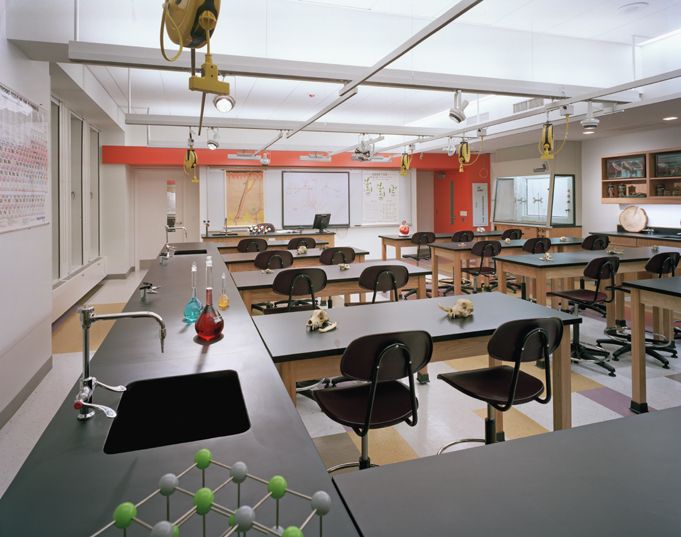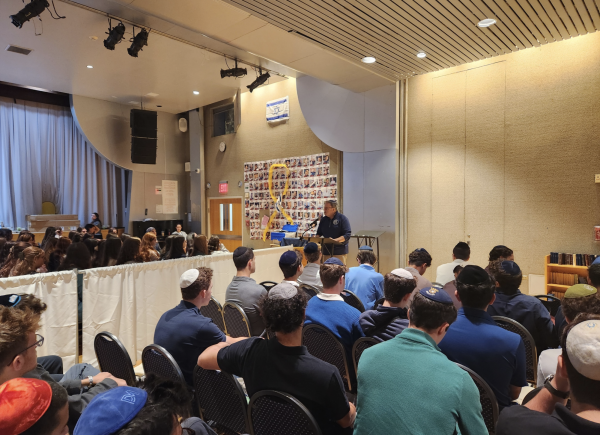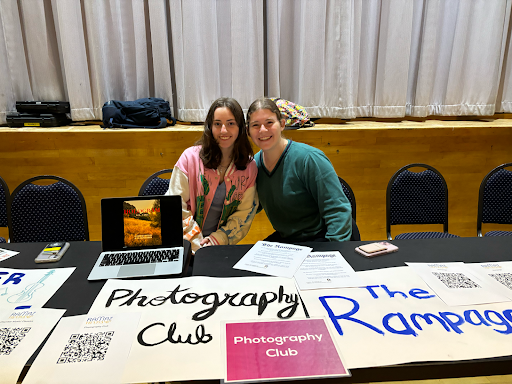“Experimenting” with Socially-Distant Science Labs
Whether you are examining cells through a microscope, racing weighted cars, or creating explosions, science is one of the most interactive and hands-on subjects in high school. Last spring when the pandemic hit and we shifted to Zoom learning, students missed out on science labs entirely. This academic year, the Ramaz administrators are transitioning students back to school with a hybrid learning system, so individual grades will have the opportunity to learn science in-person with a new version of labs. Yet, even in the building, students will be socially distanced, making it complicated for science teachers to teach using traditional labs. Science teachers are unsure about how to approach a semester’s worth of material without the proper form of a lab. Ramaz is now faced with socially distant forms of learning and experimenting in ways never done before.
According to an email sent by Rabbi Shlomo Stochel on July 22, “Students will have regular science classes but will not engage in partnered lab activities and will not be handling any lab materials. Faculty will offer virtual demonstrations to supplement their lessons.” Labs are traditionally done in partners and require teamwork and group effort. One student reads the instructions while his or her partner performs the task. Now, however, students will be instructed to distance themselves and will most likely not be able to do hands-on labs. Eitan Goldberg ’22 is nervous about a lack of science labs. He said, “Not having chemistry labs could negatively affect some students and removes the experience of learning chemistry as a whole.” Many students agree that as long as students have a version of biology, chemistry, and physics experiments, classes will be far more effective than they were this past Zoom school year. “There are many resources online,” Head of the Science Department, Ms. Leonore Brachot stated.
Last year, Ramaz moved to Zoom with little notice; teachers did the best they could, but there was no time to create a perfect lesson plan for virtual school. This year, though, teachers are entering the year with previous “Zoom experience.” According to former Ramaz science teacher, Mr. Abraham Kavian, it may be interesting for science teachers to try virtual labs. He said, “Virtual labs can be pondered on…they would lead to unique challenges in classes, of course. Maintaining focus and trying to implement different teaching styles to suit every student is much harder through Zoom.” Caleb Rosenfeld ’22 agreed with Mr. Kavian, saying, “Labs are not as beneficial if you are not doing them yourself and are watching a teacher. However, social distancing is very necessary, and whether or not we are on Zoom, teachers should do labs, and we should observe.”
Labs are usually done in a group and require collaboration. However, this year, science labs will be a new experience. “People will be spaced out and not be able to share lab materials and things,” said Rabbi Josh Blaustein. With regard to the socially distanced version of labs, Mr. Kavian exclaimed, “Socially, the challenge of being apart while working together will push students to potentially work together and develop closer connections beyond what they would have otherwise done in school.”
According to Corning.com, a website that keeps up with and discusses anything related to science, technology, and innovation, when students are active in any version of labs, there will be serious protocols, including “[providing] hand-washing stations throughout the lab…clean and disinfect frequently touched surfaces.” There is a backup plan that middle school, high school, and college kids will all have incorporated as well, “Institute remote working policies and stagger shifts when possible to minimize the number of people in the lab at one time.”
Students speculate the specifics of how labs will work. Ben Yazdi ’22 anticipates that labs might be “the teacher doing it with the class watching.” For online classes, Jordan Mittler ’22 thinks, “Teachers will most likely be in the school building every day so they can do lab demonstrations from their classrooms.” Nicole Hirschkorn ’22 wondered whether the science classrooms will be in use at all. She said, “Unless they cut class sizes, we’re not going to fit when everyone is 6 feet apart… they’re probably going to use the davening rooms with the removable wall.”
As the number of weeks decreases until school is back in session, protocols may change, and plans will become more official. There is the alternative of school shutting down again once Ramaz is a couple of months in, or even restrictions being lifted eventually in hopes of a successful vaccine. Each grade will have its struggle with the uncertainty of this year. Emily Rosenfeld ’22 is sure that “teachers will make up for it because they are amazing at what they do and make sure we understand the material despite not having labs.” In science, students learn about trial and error; in the same way, trial and error is the path to finding the best solution to engage students in science class with this new schooling system.



